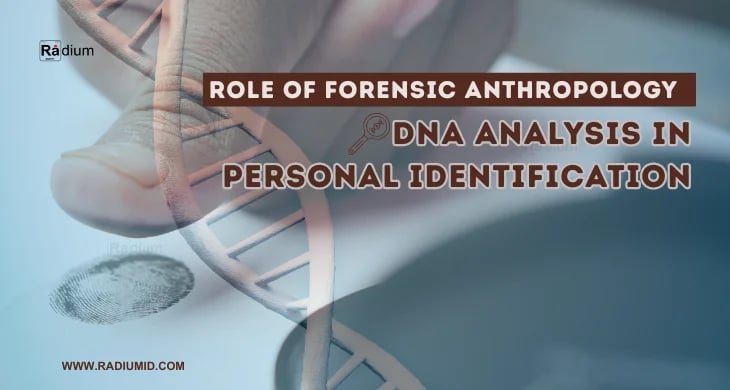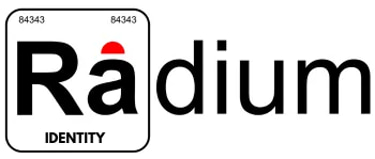The Role of Forensic Anthropology and DNA Analysis in Personal Identification
In today’s world, the ability to accurately identify people plays a important role in solving crimes, resolving legal matters, and offering closure to families. Forensic anthropology and DNA analysis stand out as effective equipment in this system, specifically when traditional identification techniques fall short.
Shubhanshi
5/24/20255 min read


Introduction
In today’s world, the ability to accurately identify people plays a important role in solving crimes, resolving legal matters, and offering closure to families. Forensic anthropology and DNA analysis stand out as effective equipment in this system, specifically when traditional identification techniques fall short. From fingerprints to teeth and even DNA markers, each element helps the whole field of identifying people who have caught trouble. Different ways help make sure someone is who they say they are.
Evolution of Personal Identification Techniques
Historically, identification started with basic name tags, serial numbers, and visual confirmation. Over time, methods evolved to include biological evidence such as antigens on red blood cells and anatomical features. However, it’s forensic anthropology that has redefined how investigators approach unidentified remains. Analyzing bones to figure out age, sex, race and height—that's super important, really. People do that with bones that are very damaged or are hard to recognize anymore after they've died because of disasters natural or made by people like fires or things like that.
The Radium Company knows just how important unique personal identification is to forensic anthropology, especially when standard methods don't quite cut it. Whether it's a terrorist bombing, plane crashing when it's flying up in the air, or being flooded by the ocean like a typhoon, anthropologists with forensic skills use a victim’s skeleton to identify them. That gives people like family members the kind of closure they really badly need and deserve.
Development of Fingerprints During Intrauterine Life
The formation of fingerprints begins early during fetal development—specifically within the first four months of gestation. Scientific studies have shown that this process involves the creation of primary and secondary ridges on the fingers and palms. Originally, primary ridges appear, and as the development continues, secondary ridges and grooves are formed between the papillary trawls.
One of the key factors affecting fingerprints is the presence of anatomical structures known as volar pads. These are small swelling in tissues that appear around the seventh gestation week, and appear at the fingertips, between the fingers, on the thumb (thumb) and hypothenar (pink side) regions of the palm of the palm.
As the baby grows in the womb, these pads at the bottom of the hands start to retreat, usually becoming less noticeable by about the 10th week of pregnancy. Eventually they fade completely, leaving behind those distinctive ridge patterns that we know as fingerprints and that are so individual they could be used to solve mysteries or even to identify lost family members.
Interestingly, fingerprint patterns are so unique that they can even distinguish between identical (monozygotic) and fraternal (dizygotic) twins. Despite sharing the same genetic makeup, even identical twins do not have the same fingerprints. The global frequency of identical twins is estimated to be around 0.4% across different populations, enhancing the value of fingerprints in personal identification.
Forensic Anthropology and Its Role in Personal Identification
Forensic ethnicity is a special branch of anthropology that focuses on identifying human residue, especially when they are decomposed, damaged or decreased in the form of skeletons. This field plays an important role in determining major biological features such as age, gender, gender and size, which simultaneously helps create a personal identity profile.
Out of these four identifiers, height and gender are surely the most important for carving out an identity for a person. Height is really important when doing forensic profiles, especially because we're talking about taking a close look at bones and bodies to solve crimes. Heights can help us put together a clearer picture of who did what.
After big bad events like quakes or floods or tsunamis or big hurricane storms and also accidents like bombs or attacks by bad guys, genocides or plane crashes or huge crashes and other such mishaps, survivors often can't be identified because of the destruction. In such scenarios, forensic anthropologists step in to analyze body fragments—whether mutilated, decomposed, or dismembered—to help identify the individuals involved.
These efforts matter both legally and also very importantly as a humanitarian act. Families are given closure and regular steps like death certification and pursuing justice become much clearer and smoother.
Personal identification can be achieved through various scientific approaches, including:.
Anthropometry (the measurement of body parts)
Fingerprint analysis
Lip print examination
Biometric techniques
Forensic odontology (the study of dental evidence)
Molecular methods such as DNA profiling, blood group analysis, and the study of body fluids.
Together, these tools form the foundation of modern forensic science, with forensic anthropology playing a key role when only skeletal or partial remains are available.
Fingerprint Analysis and Biometrics
The oldest and most reliable methods of identity are fingerprint analysis. Dactylography- or fingerprinting is based on the fact that fingerprints are unique and do not change over time. Friction stripes on the fingers leave patterns such as loops, vortex, arches and composites, which can be classified for accurate belief. Similar twins do not share the same finger printing patterns, proving how effective this method is to investigate.
Today, many systems are unimodal, relying on just one trait like face, iris, or fingerprint. However, this can have limitations. At Radium ID, we recommend multimodal biometric systems that use multiple traits, improving security and accuracy for personal identification. This is vital not just in forensic science, but in daily security checks, banking, healthcare, and more.
DNA Profiling and Forensic Odontology
DNA profiling is another game-changer in personal identification. By looking closely at the special DNA that makes each of us unique, investigators working in forensics study and compare that DNA to look into mysteries. They use super accurate methods to match up bones or other remains they find with people who are missing or are suspects. When the body is beyond recognition, DNA serves as the ultimate proof of identity.
Alongside DNA, forensic odontology is regularly used—particularly when only teeth or jawbones are to be had. This branch of forensic science includes inspecting dental records, which remain intact even after intense damage to the frame. Trained forensic dentists can match bite marks, enamel alignment, and restorations to regarded records, making this approach essential in both criminal investigations and mass disasters.
Radium ID, which really leads the pack when it comes to identity solutions, blends together some high cool forensic tech to offer very efficient, secure and super accurate systems that help verify information. As Radium keeps pushing boundaries with new technology in biometrics, the company is very much blurring lines between traditional forensics and cutting edge security systems.
Tattoos, Scars, and Visual Identification
Sometimes, it’s the visible marks that make the difference. Tattoos and scars are often used in personal identification in forensic settings. These permanent or semi-permanent features help law enforcement recognize and classify individuals when other identifiers are missing. Witness accounts, though sometimes vague, can also aid in identifying suspects when no visual evidence is available.
Photographs, too, play a huge role in visual identification, often used alongside fingerprint analysis and other biometric records. This multilayered approach ensures no detail is overlooked.
The Future of Personal Identification
With progress in technology, the science of deciding individuals promotes. The transition from unimodal to multimodal biometrics, including fingerprints, iris, face and even gait analysis, provides more reliability. Companies such as Radium ID break new grounds, combining AI and machine learning with biometric authentication to operate personal identification systems across sectors.
In summary, forensic anthropology, DNA typing, fingerprinting, integration of forensic odontology and biometric technologies, transforming how we know individuals - dead or alive. From criminal cases to regular security operations from natural disaster to recovery, these technologies are a more secure, more responsible world.
Solutions
Advanced identity verification and KYC services.
Quick Access
Access
© 2025. All rights reserved.
